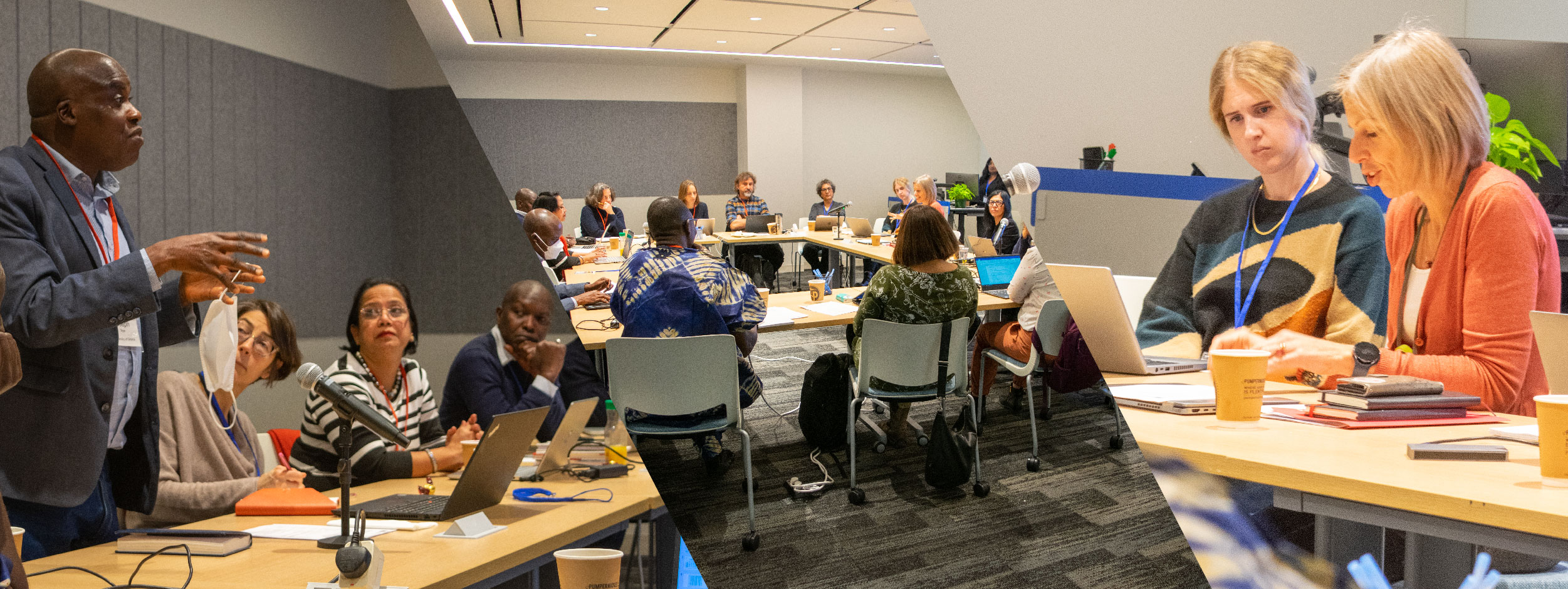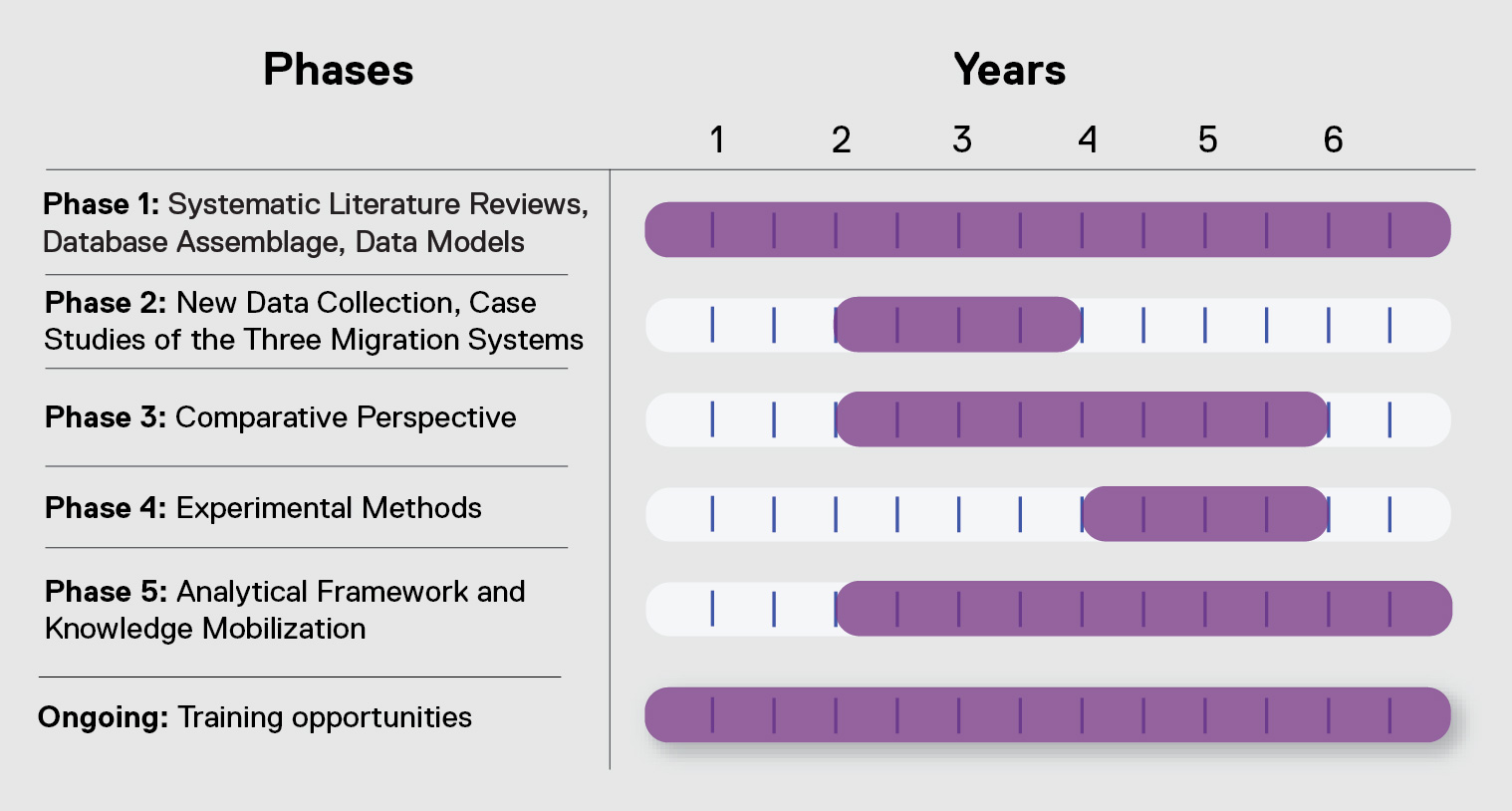Introduction

MEMO is a multidisciplinary research partnership that examines migration patterns focusing on three regional systems. By uncovering new connections between macro-level, contextual drivers (such as economic or political conditions) and individual determinants (such as the cultural and emotional factors that influence a migrant’s personal decisions), the project aims to uncover new knowledge and develop a framework for a better understanding of migration.
MEMO draws on data to investigate migration patterns originating in countries from three intercontinental regions in fourteen countries with different cultures and languages. The research is multi-site, comparative, intersectional, multilingual and multiscale. Innovative analytical tools and frameworks will be created to aid decision makers in developing future migration policies.
Three primary objectives
- To map the links between internal, intra-regional and intercontinental migration along complex population dynamics and migration systems;
- To describe and interpret the interplay among migration drivers (environmental conditions, demographic and health factors, economic development dynamics, socio-political issues), accounting for cultural and emotional processes that can shape individual decisions to migrate;
- To provide evidence to inform policy and support an efficient and rights-based governance of international migration.
The partnership
MEMO is a formal partnership between 19 research organizations and involves numerous affiliate academic institutions and community partners, including service providers, NGOs and international organizations. Participating organizations and their representatives can be found on this web page.
The partnership is led by CERC Migration at Toronto Metropolitan University (opens in new window) . The university has a long history of investing in migration research and teaching as one of its a strategic priorities.
Project Phases
The project is organised in five phases which involve collaboration of all partners within the migration systems.

The MEMO project will analyze published studies using standardized methods to establish a baseline of existing knowledge by regional migration system. The project's final output will provide a highly reliable set of statements to identify gaps in knowledge. The review will be updated yearly.
The project collects statistical data on internal and international migration by regional migration system over the last 30 years. GIS maps will be created showing population movements and flows within and between countries. Migration and population data are notoriously coarse; they are not standardised in terms of quality or timing across nations and are often derived from censuses that are inconsistently and/or infrequently conducted. Given the scale of this project, the number of countries being studied, and the variability of available data for each country, gridded population data will be assembled from multiple sources, reconciling these spatially and temporally as well as possible. The project aims to generate, within the first 12 months, a set of baseline interactive maps that allow the research team to visualize in-country and international migration flows for each region over time.
Once the initial data and GIS maps and layers of the analysis have been established, the project will adopt different methodologies for the modelling of data.
This is an iterative process, with findings from qualitative components of the project feeding into the modeling activities, and modeling outputs generating new questions for qualitative researchers. The analysis focuses on those countries and inter-country relationships where the data robustness allows for the most efficient modelling work, thereby creating a standardized method that can later be applied to those countries/flows where data are more limited. This generates the groundwork for subsequent creations of forecasting models that can be used to project the possible effects of changes in particular drivers on future migration flows.
This process will continue concurrently with other project activities throughout the life of the project.
The project will study different types of migrants / migrant households to investigate the process of migration decision-making. This phase includes experiments in selected origin locations, eliciting decision-making for intra-regional vs. inter-continental migration through experimental methods. The experiments will involve a hypothetical discrete-choice survey where the researchers describe migration options (depending on migrants’ characteristic) and ask respondents to express their preferences. Repeating the survey in different destination countries will allow the comparison of the decision-making process for migrants and their households across the regional systems. These experiments will reveal the role of meso- (institutions, networks) and micro-level (judgement, emotions, risk perceptions) drivers in shaping migrants’ decisions and actions. The role of community partners (opens in new window) will be crucial in the setting-up and completion of these experiments.
This is not a final phase but a process that runs through the project as the different components feed into the development of a new analytical framework, which brings together the macro, meso, and micro factors that shape internal and international migration. Knowledge Mobilization, developed during the life-course of the project, will be intensified in this phase.
The project will create training opportunities for ~100 students and emerging scholars.